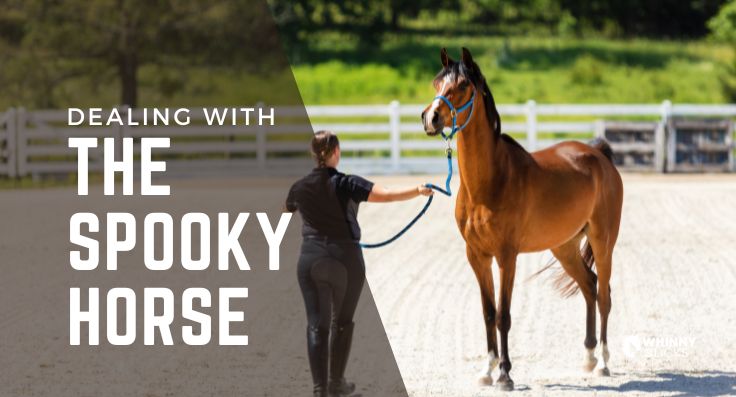How Do I Deal with a Spooky Horse? A Step-by-Step Guide
Spending time with natural horsemanship trainers, I have spent a decade learning the language of the equine, using it to form deep connections with these beautiful animals. There are few challenges as perplexing and, at times, intimidating as a spooky horse, but even this is surmountable with patience, understanding, and a keen eye.
A spooky horse is not a flaw; it is a sign that your horse is sensitive to its surroundings. It’s how horses have survived for centuries – by being vigilant and responsive to potential threats. But when it comes to our partnership with them, this hypervigilance can be disruptive and even dangerous.
Here’s how to work with your horse when he spooks:
Step 1: Keep Calm
Reacting to a spook with fear or anxiety of your own will only exacerbate the situation. Horses are highly attuned to the emotional state of their handlers. Stay calm and composed, showing your horse through your behavior that there’s nothing to fear.
Step 2: Assess the Situation
Try to determine what caused the spook. Is it a new object, a sudden movement, an unexpected noise? Understanding the trigger will help you manage the current situation and prepare for similar ones in the future.
Step 3: Give Your Horse Space
Allow your horse to put some distance between itself and the perceived threat. This doesn’t mean letting him bolt or run away, but rather allowing him some leeway to feel safe.
Step 4: Redirect Attention
Distract your horse from the source of fear. You can do this by asking him to perform a task he’s comfortable with, such as following a feel, moving in a circle, or stopping and starting again. This not only diverts his focus but also reinforces your role as a calm, trusted leader.
Step 5: Gradual Exposure
If possible and safe to do so, gradually expose your horse to the source of its fear. Start from a distance and slowly approach the object or place. Always allow your horse to retreat if it becomes excessively nervous and reapproach. The goal is to only approach to the point before your horse starts to get excessively scared and then retreat and go closer the next time.
Step 6: Positive Reinforcement
Reward calm behavior around the spooky object or situation. This could be verbal praise, gentle petting, or a favorite treat. The goal is to create a positive association with the thing that initially caused fear.
Step 7: Reassess and Repeat
Some horses might need more time and exposure than others to fully overcome their fear. Repeat the process as necessary, always maintaining patience and a positive, calm demeanor.
Remember, each horse is unique and may react differently to the same situation. What’s most important is to foster trust and reassurance between you and your horse, which is achieved through consistent, calm, and empathetic handling.
Remember to consult with a professional trainer if you’re facing consistent difficulties. They can provide personalized strategies to help both you and your horse navigate through the process.


